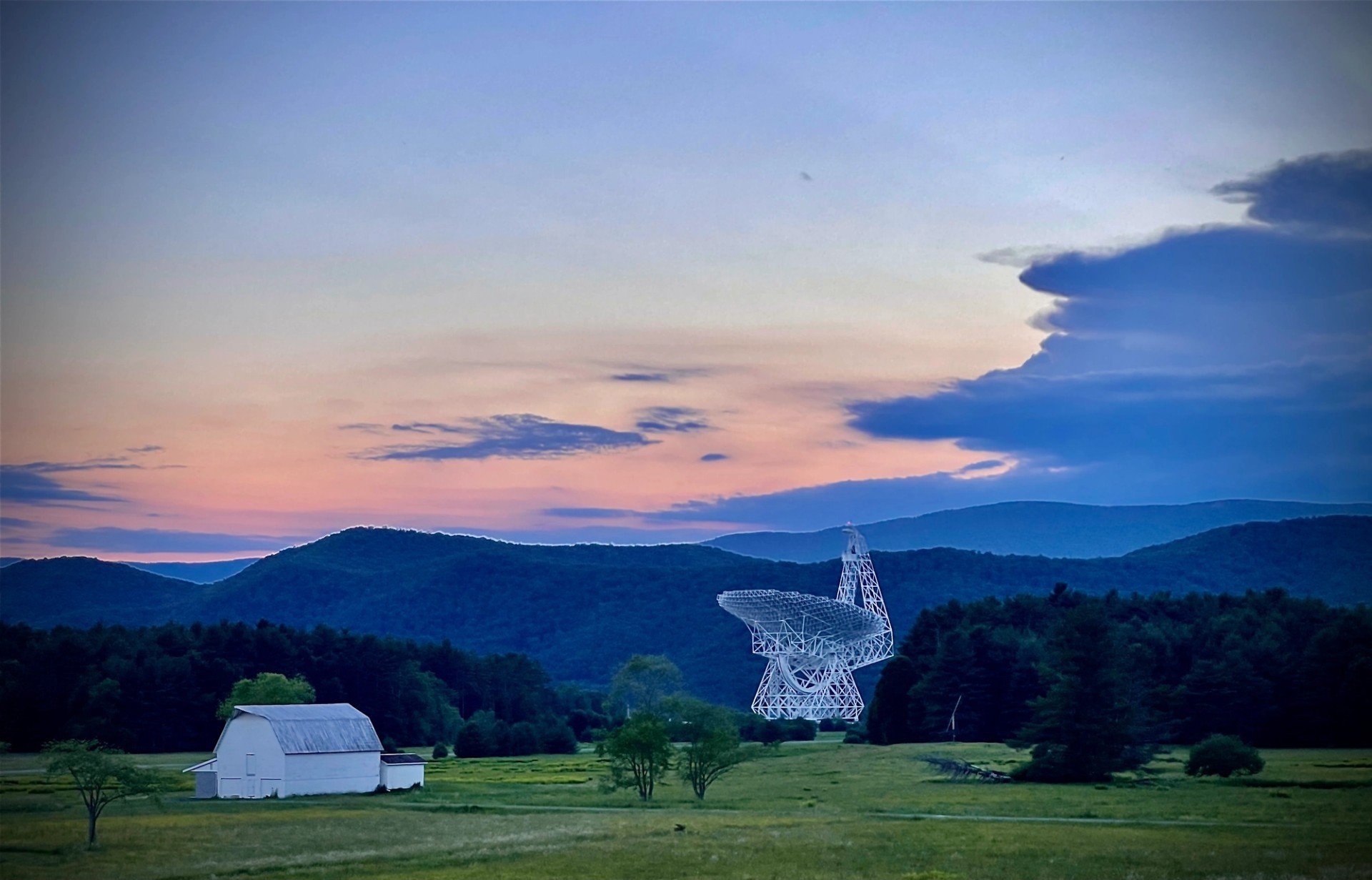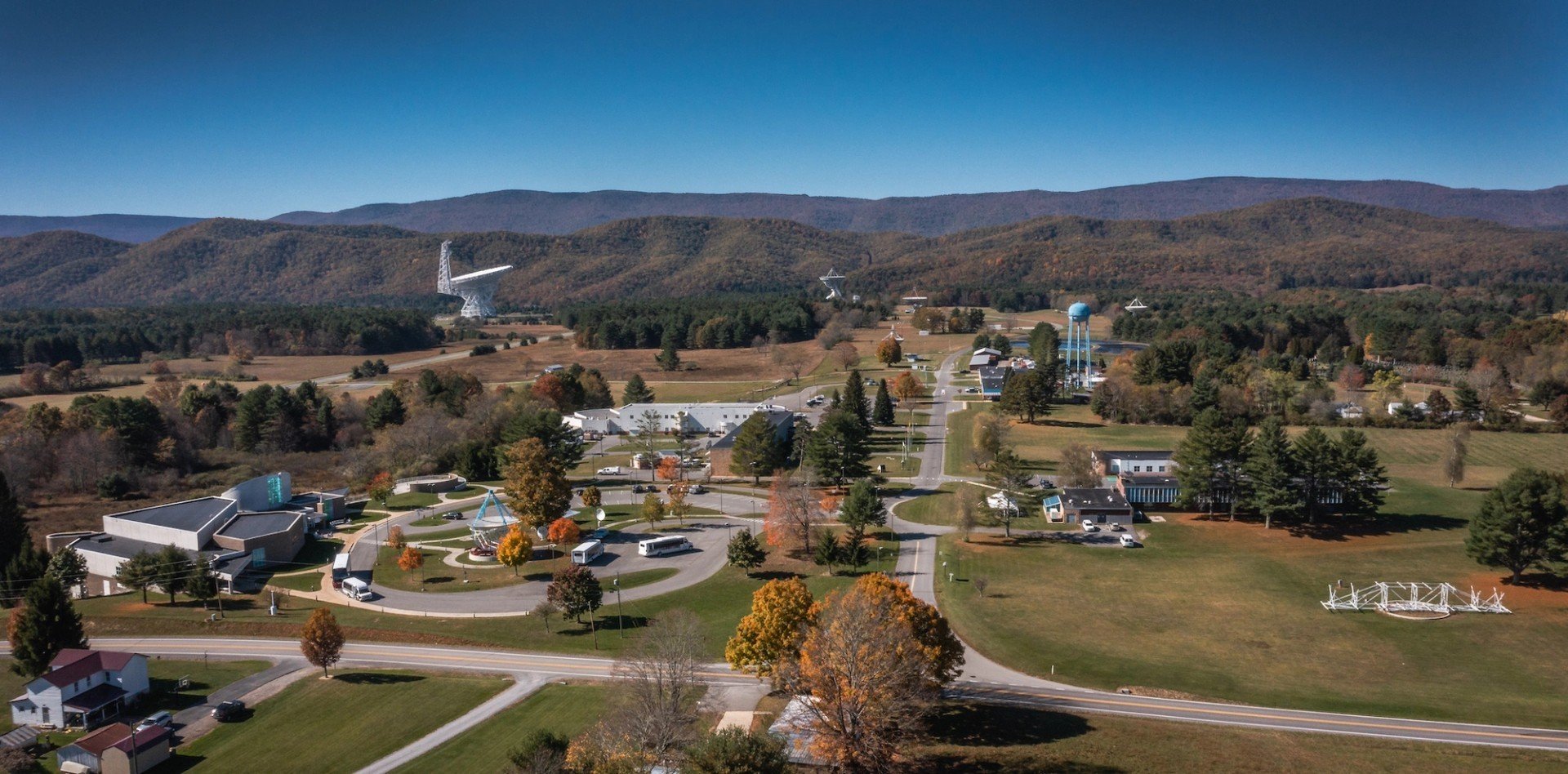At Green Bank Observatory in West Virginia, Life is Radio Silent — by Design
APS’s newest Historic Site celebrates 65 years since its first radio telescope came online.

The Green Bank Observatory (GBO) is home to the largest moveable object on land that humans have ever built — a radio telescope. It’s also home to countless juxtapositions.
Surrounded by mountains and in the middle of two radio quiet zones, GBO lacks Wi-Fi, Bluetooth, and reliable cellular service — but even as it seeks to quiet modern technology, the observatory relies on it. It boasts the latest receiver technologies, but the data it collects leaves GBO via miles of ethernet cables. Staff can point the telescope at a distant galaxy with the uncertainty of a few arcseconds, but they aren’t allowed to heat coffee in a microwave.
The rural environment makes GBO a study in contrasts, too. “You can be in the control room with really state-of-the-art electronics and then take a walk for a break and see a bear,” says Felix “Jay” Lockman, a 30-year staff member and former director.
GBO opened in the late 1950s as the National Radio Astronomy Observatory (NRAO). The National Science Foundation selected the rural location in Green Bank, West Virginia, as the valley is naturally shielded from radio emissions by mountains, the climate is dry, and the sparse population of people and cars means lower levels of radio interference.

NRAO’s first of many telescopes, an 85-foot dish, started collecting data in early 1959, kicking off 65 years of pioneering discoveries. Among the early projects, Frank Drake mapped the radio sources at the center of the Milky Way Galaxy and conducted the first modern systematic search for signs of extraterrestrial life (Project Ozma). Since then, scientists have used GBO data to spot dark matter halos around galaxies, discover new pulsars, identify interstellar molecules and, most recently, detect the signature of background gravitational waves in pulsar timing arrays.
For the last 20 years, the observatory’s research heavyweight has been the Robert C. Byrd Green Bank Telescope (GBT), the world’s largest fully steerable radio telescope. With a 100-meter dish sensitive to frequencies from 0.1 to 116 GHz, the telescope is helping scientists study the solar system, black holes, gravitational waves, and neutron stars. GBT is also a key instrument for Breakthrough Listen, a SETI project at the University of California, Berkeley, using radio telescopes to search for signs of intelligence.
The observatory was renamed GBO after being spun off from other NRAO sites in 2016. And in September 2023, APS designated Green Bank an APS Historic Site, an acknowledgement of the observatory’s importance to physics history.
Keeping radio interference levels low over 65 years of technological advances has required commitment and creativity. “Anything that can create a spark can cause us interference, so things like heaters, pumps, power lines, and cars with spark plugs can be a problem,” says Chuck Niday, a GBO electronics technician whose job includes locating and, if possible, removing radio frequency interference. “Wi-Fi is a huge source of noise,” he says.
GBO is somewhat protected by the National Radio Quiet Zone, a 13,000-square mile area surrounding GBO and U.S. facilities in Sugar Grove, West Virginia, where radio emissions are federally regulated (although satellite and airplane emissions are exempt). Stricter restrictions stem from the West Virginia Radio Astronomy Zoning Act, which allows GBO to prohibit electrical equipment that interferes with observations on its campus and within a ten-mile radius.
The observatory’s juxtapositions go beyond its scientific requirements. The small town has an unusually high percentage of people with Ph.D.s, but K-12 students have limited academic opportunities, and aside from the observatory, there aren’t many places to work.
“Ninety percent of the people who are qualified to work at the observatory would probably not be interested in living in such a rural location,” acknowledges Lockman. Still, he doesn’t feel isolated. GBO hosts thousands of visitors annually from the local area and scientific community. “We have people coming through all the time,” he says. “It's possible to really feel connected to the scientific community.”
GBO software engineer Victoria “Cat” Catlett, who uses the pronoun they, agrees. After earning a physics bachelor’s degree in 2022 from the University of Texas at Dallas, they took a job at GBO sight unseen — a snowstorm thwarted the in-person interview. It felt like a big risk.
“I was worried about being disconnected from everybody,” Catlett says. “[And] since the town is so small, my co-workers would have to be my friends.” But they’ve found the people friendly and passionate, the science fascinating, and the unique culture a good fit. And as for the Wi-Fi restrictions? “It's actually been a little freeing to be able to completely disconnect.”